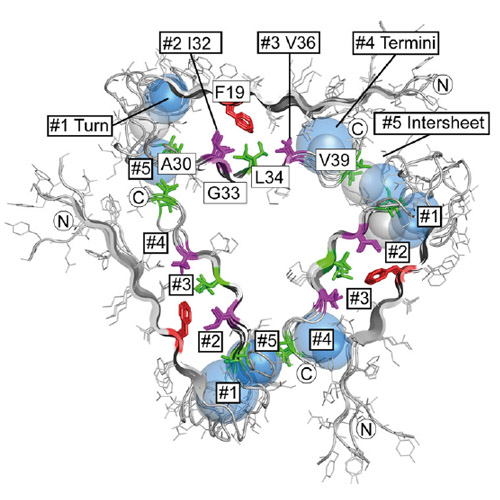Structural Mechanism of the Interaction of Alzheimer Disease A Fibrils with the Non-steroidal Anti-inflammatory Drug (NSAID) Sulindac Sulfide
28-Sep-2015
JOURNAL OF BIOLOGICAL CHEMISTRY, VOLUME 290, NUMBER 48, DOI 10.1074/jbc.M115.675215
Alzheimer's disease is the most severe neurodegenerative disease worldwide. In the past years, a plethora of small molecules interfering with amyloid-β (Aβ) aggregation have been suggested. However, their mode of interaction with amyloid fibers is not understood. Non-steroidal anti-inflammatory drugs (NSAIDs) are known γ-secretase modulators (GSMs). It has been suggested that NSAIDs are pleiotrophic and can interact with more than one pathomechanism. We present here a magic angle spinning (MAS) solid-state NMR study that shows that the NSAID sulindac sulfide interacts specifically with Alzheimer's disease Aβ fibrils. We find that sulindac sulfide does not induce drastic architectural changes in the fibrillar structure, but intercalates between the two β-strands of the amyloid fibril and binds to hydrophobic cavities, which are found consistently in all analyzed structures. The characteristic D23-K28 salt bridge is not affected upon interacting with sulindac sulfide. The primary binding site is located in the vicinity of residue G33, a residue involved in M35 oxidation. The results presented here could be useful in the search for pharmacologically active molecules which can potentially be employed as lead structures to guide the design of small molecules for the treatment of Alzheimer's disease.











